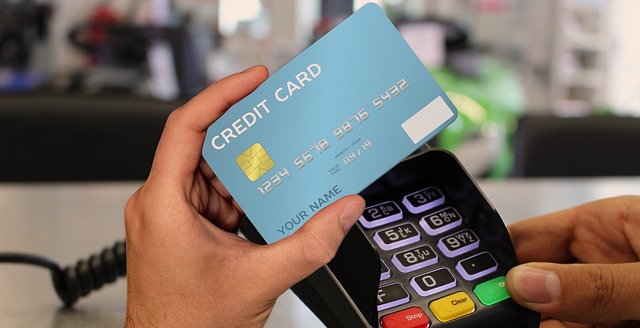he Snowball vs. Avalanche Method: Pay Off Debt Faster
Debt repayment strategies aren’t one-size-fits-all. The Snowball and Avalanche methods are the two most popular ways to tackle debt—but which one is right for you? Here’s a detailed breakdown, including real-life examples, psychological benefits, and math-backed results to help you decide.
❄️ The Snowball Method (Quick Wins for Motivation)
How It Works:
-
List debts from smallest to largest balance (ignore interest rates).
-
Pay minimums on all debts except the smallest.
-
Throw every extra dollar at the smallest debt until it’s gone.
-
Repeat with the next smallest debt.
👍 Pros:
✔ Quick wins boost motivation (early victories keep you going).
✔ Simpler to stick with (psychologically rewarding).
✔ Best for people who need encouragement.
👎 Cons:
✖ May cost more in interest (since high-rate debts aren’t prioritized).
Example:
| Debt | Balance | Interest Rate | Minimum Payment |
|---|---|---|---|
| Credit Card A | $500 | 18% | $25 |
| Credit Card B | $2,000 | 22% | $60 |
| Student Loan | $10,000 | 6% | $150 |
Strategy:
-
Pay $500 on Credit Card A first (while paying minimums on others).
-
Once paid off, roll that 500+25 (old minimum) into Credit Card B ($2,000).
Result: You eliminate a debt fast, gaining momentum.
🏔️ The Avalanche Method (Save the Most on Interest)
How It Works:
-
List debts from highest to lowest interest rate (ignore balances).
-
Pay minimums on all debts except the highest-rate one.
-
Throw every extra dollar at the highest-interest debt first.
-
Repeat with the next highest-rate debt.
👍 Pros:
✔ Saves the most money (mathematically optimal).
✔ Pays off debt faster long-term (less interest accrues).
👎 Cons:
✖ Slower initial progress (if big debts have high rates).
✖ Can feel discouraging if first debt is large.
Same Example, Avalanche Approach:
| Debt | Balance | Interest Rate | Minimum Payment |
|---|---|---|---|
| Credit Card B | $2,000 | 22% | $60 |
| Credit Card A | $500 | 18% | $25 |
| Student Loan | $10,000 | 6% | $150 |
Strategy:
-
Attack Credit Card B ($2,000 at 22%) first with extra payments.
-
Once paid off, roll that 60+extra∗∗into∗∗CreditCardA(500 at 18%).
Result: You save more on interest, but it takes longer to see progress.
📊 Snowball vs. Avalanche: Side-by-Side Comparison
| Factor | Snowball Method | Avalanche Method |
|---|---|---|
| Strategy | Pay smallest balance first | Pay highest interest first |
| Best For | People who need motivation | People who want to save money |
| Interest Paid | Slightly more | Least possible |
| Speed of Progress | Fast early wins | Slower start, faster finish |
| Psychological Benefit | High (quick wins) | Low (requires discipline) |
💡 Which One Should You Choose?
✅ Pick the Snowball Method If:
✔ You need quick wins to stay motivated.
✔ You have small debts you can knock out fast.
✔ You’ve struggled to stick with debt plans before.
✅ Pick the Avalanche Method If:
✔ You care more about math than motivation.
✔ You have high-interest debts (credit cards, payday loans).
✔ You’re disciplined enough to delay gratification.
🔄 Hybrid Approach?
-
Start with Snowball (for quick wins), then switch to Avalanche once you’re motivated.
-
Example: Pay off one small debt first, then attack the highest-interest debt next.
💰 Real-Life Example: Snowball vs. Avalanche
Debts:
-
$3,000 medical bill (0% APR)
-
$5,000 credit card (18% APR)
-
$8,000 personal loan (10% APR)
Extra monthly payment: $800
Snowball Result:
-
Pay off $3,000 medical bill first (0% interest, quick win).
-
Then attack $5,000 credit card.
-
Finally, tackle 8,000personalloan∗∗.✅∗∗Totalinterestpaid:∗∗∗∗2,100
Avalanche Result:
-
Attack $5,000 credit card (18%) first.
-
Then $8,000 personal loan (10%).
-
Finally, 3,000medicalbill(0✅∗∗Totalinterestpaid:∗∗∗∗1,600
Difference: Avalanche saves $500, but Snowball gives faster wins.
⚡ Pro Tips for Maximum Efficiency
✔ Negotiate lower interest rates (call creditors and ask).
✔ Use windfalls (tax refunds, bonuses) to crush debt faster.
✔ Automate payments so you don’t miss deadlines.





